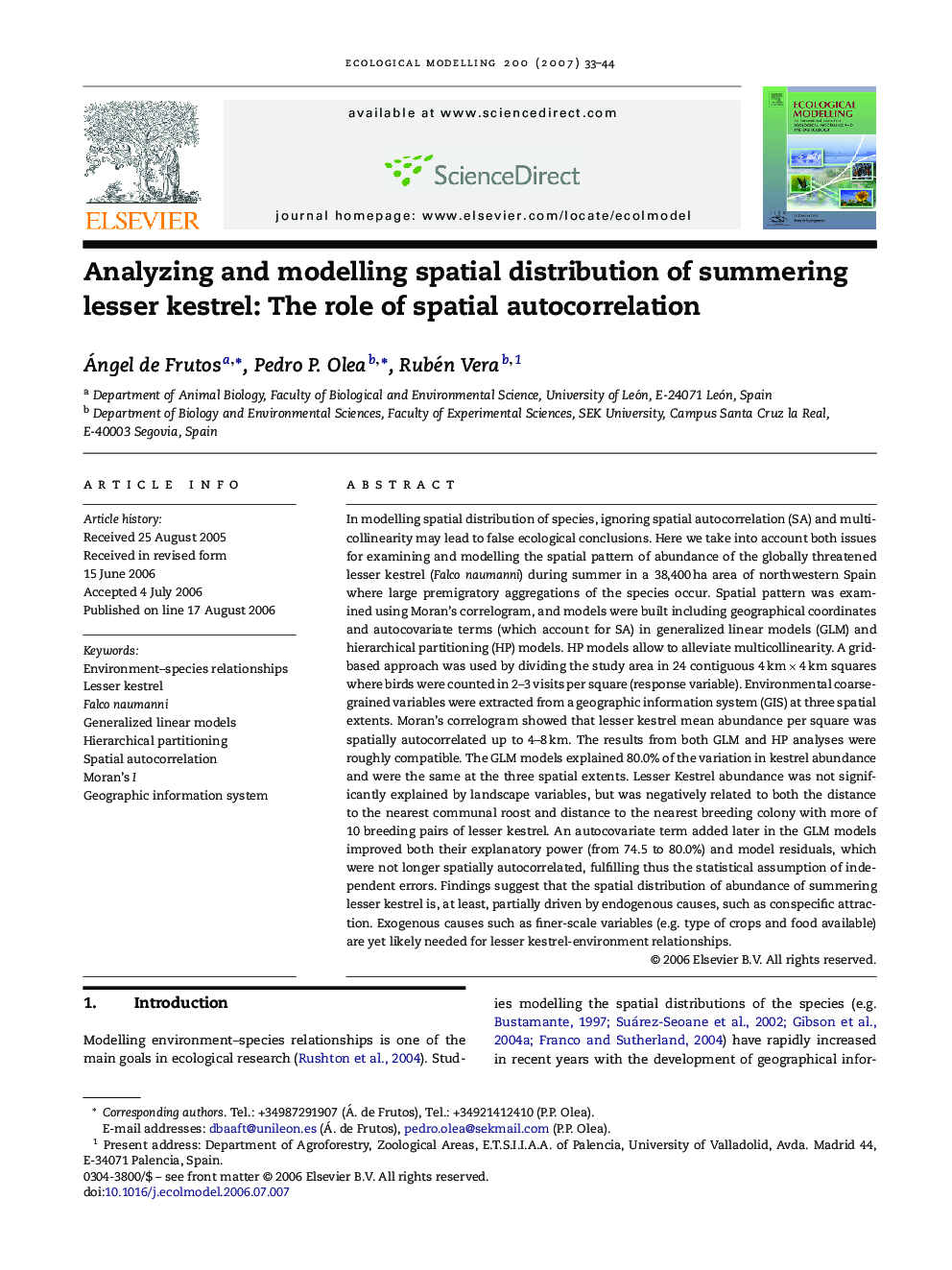| کد مقاله | کد نشریه | سال انتشار | مقاله انگلیسی | نسخه تمام متن |
|---|---|---|---|---|
| 4378862 | 1617556 | 2007 | 12 صفحه PDF | دانلود رایگان |

In modelling spatial distribution of species, ignoring spatial autocorrelation (SA) and multicollinearity may lead to false ecological conclusions. Here we take into account both issues for examining and modelling the spatial pattern of abundance of the globally threatened lesser kestrel (Falco naumanni) during summer in a 38,400 ha area of northwestern Spain where large premigratory aggregations of the species occur. Spatial pattern was examined using Moran's correlogram, and models were built including geographical coordinates and autocovariate terms (which account for SA) in generalized linear models (GLM) and hierarchical partitioning (HP) models. HP models allow to alleviate multicollinearity. A grid-based approach was used by dividing the study area in 24 contiguous 4 km × 4 km squares where birds were counted in 2–3 visits per square (response variable). Environmental coarse-grained variables were extracted from a geographic information system (GIS) at three spatial extents. Moran's correlogram showed that lesser kestrel mean abundance per square was spatially autocorrelated up to 4–8 km. The results from both GLM and HP analyses were roughly compatible. The GLM models explained 80.0% of the variation in kestrel abundance and were the same at the three spatial extents. Lesser Kestrel abundance was not significantly explained by landscape variables, but was negatively related to both the distance to the nearest communal roost and distance to the nearest breeding colony with more of 10 breeding pairs of lesser kestrel. An autocovariate term added later in the GLM models improved both their explanatory power (from 74.5 to 80.0%) and model residuals, which were not longer spatially autocorrelated, fulfilling thus the statistical assumption of independent errors. Findings suggest that the spatial distribution of abundance of summering lesser kestrel is, at least, partially driven by endogenous causes, such as conspecific attraction. Exogenous causes such as finer-scale variables (e.g. type of crops and food available) are yet likely needed for lesser kestrel-environment relationships.
Journal: Ecological Modelling - Volume 200, Issues 1–2, 10 January 2007, Pages 33–44